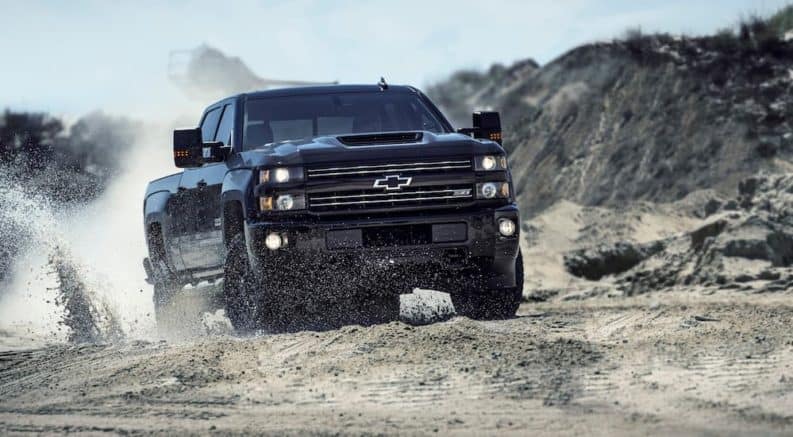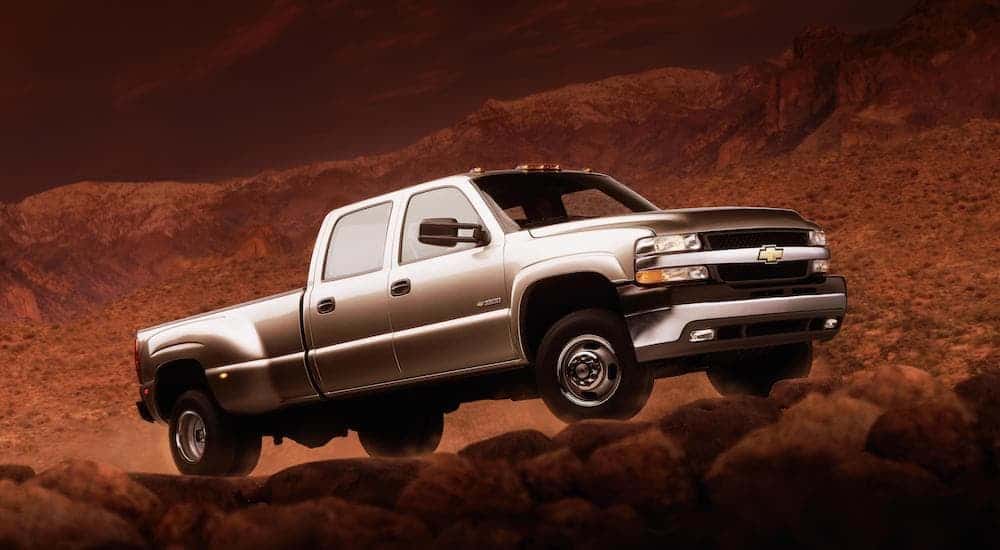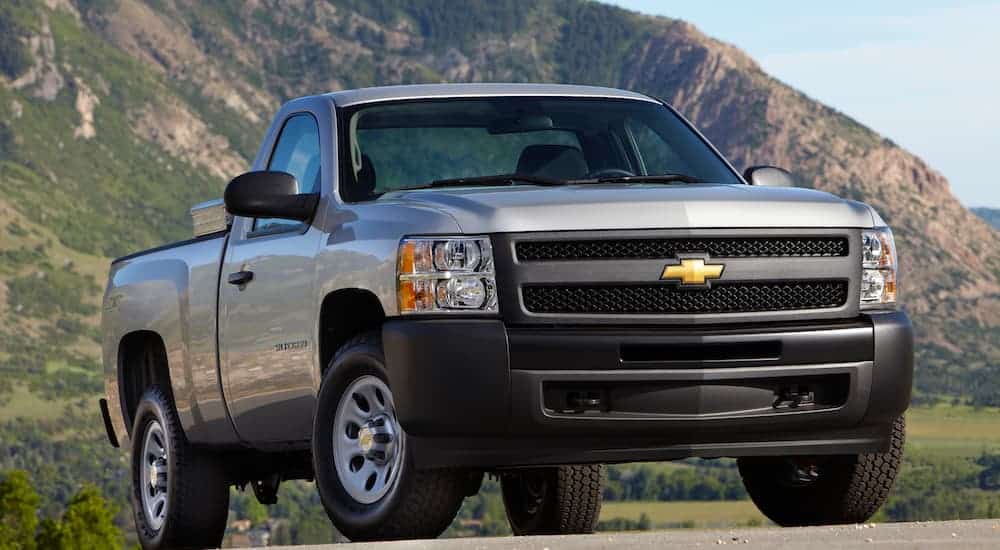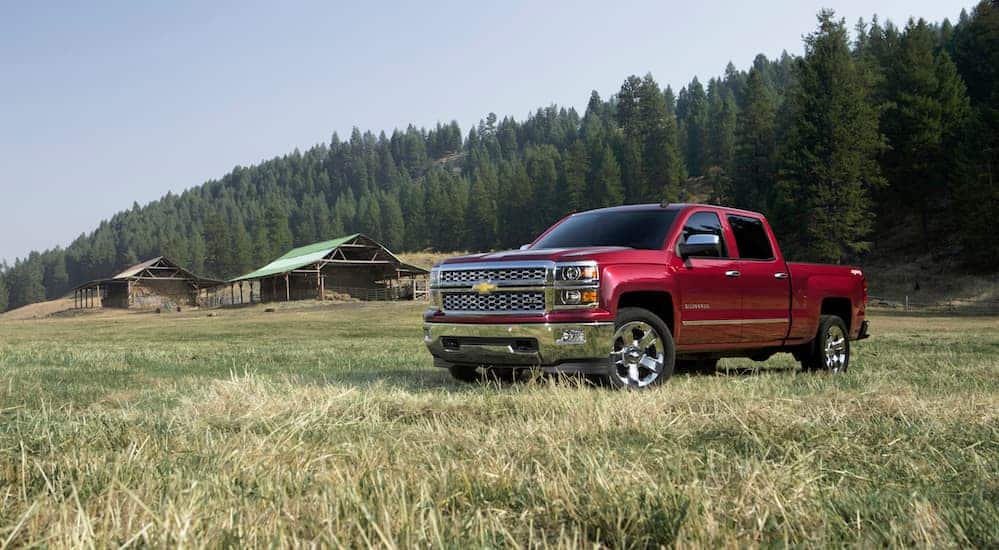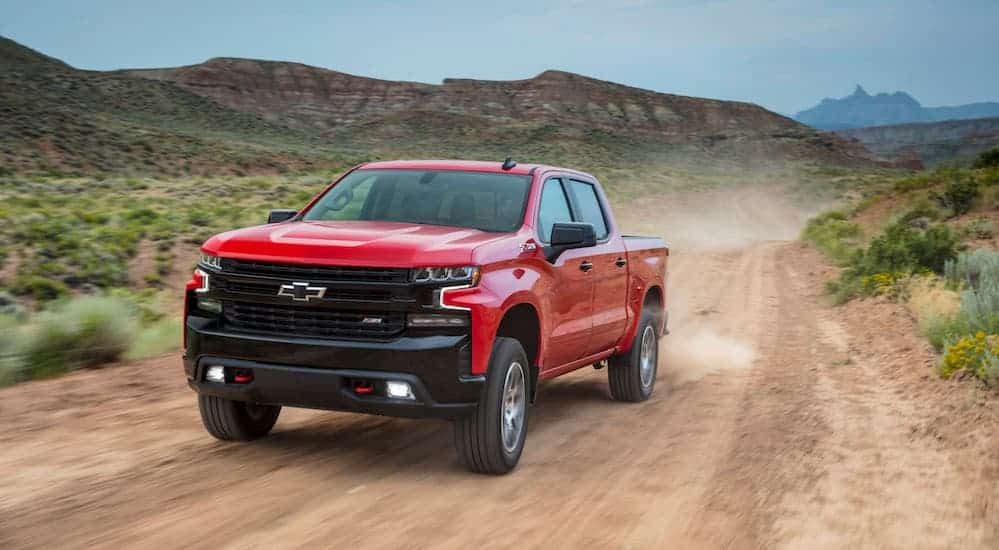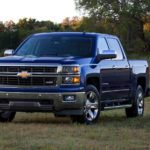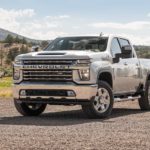The Chevy Silverado has been GM’s full-size pickup since 1998 when it took over for the decades-old C/K pickup line. In fact, “Silverado” was at one point a trim used on the old line of trucks. General Motors does this rather frequently. The TrailBlazer started as a level of trim for the Blazer and eventually became its own vehicle. The Silverado has proven itself over the last twenty-plus years as a dependable, long-lasting truck. However, new trucks right off the assembly line can get pretty expensive. Even the base trucks, after delivery and other taxes, will probably set you back over $30,000. However, if you were to instead spring for a used Chevy Silverado, you can save big. This way, you’ll let the original owner swallow the depreciation. But what should you look for regarding a used Chevy Silverado? Here are just a few of the generation specifics you’ll find on the trucks.
First Generation Chevy Silverado
The first run of the Chevy Silverado came as the 1999 model. These pickups have a slightly more rounded nose than the 1998 C/K. Most of the C/K pickups and SUVs maintained the flat-nosed look, so the Chevy Silverado at the time offered an “updated” visual appearance. At the time, most vehicles in general, were receiving rounded off front noses as auto manufacturers moved away from the flat design to improve aerodynamics and boost fuel economy (you’ll find curved designs on both the Ford F-150 and Dodge Ram 1500 at the time as well).
You will find more engine options on the first generation Chevy Silverado than just about any vehicle manufactured now. Of course, now you can find some light-duty pickups with supercharged I4 engines. American truck manufacturers wouldn’t have dreamed of dropping anything under a V6 into a truck back then.
Chevy used just one 4.3L V6 engine in the entire run of the first generation Silverado. Everything else included a 4.8L V8, a 5.3L V8, a 6.0L V8, a 7.4L V8, and an 8.1L V8. And yes, an 8.1L V8 is as massive as it sounds (although some Ford pickups did use V10 engines back around the same time). Chevy maintained the same basic look for the first few years of the truck, then gave it a slight mid-generation facelift with the 2003 model year. The same year, Chevy came out with its Silverado SS pickup. The company designed it to be a high-performance truck, featuring a lower frame (instead of a traditionally lifted frame), plus front and rear spoilers. The company put the same engine into the SS that is used in the Escalade.
Second Generation Chevy Silverado
Chevy maintained the first generation pickup through the 2006 model year. With the 2007 model year, Chevy brought out its second generation. With this build, the truck saw a slight height and size increase. In fact, Chevy based the first year of the second generation on the 2003 Silverado 2500 HD design. The larger heavy-duty pickups often saw a height and profile improvement before the smaller pickups. With the 2007 model year, Chevy upgraded the truck across the board, including updates in the exterior look, the frame, a new suspension, plus several more powerful engines.
With the 2007 release, the Silverado was awarded the North American Truck of the Year. Chevy cut down on the number of engines offered with the second generation down to five. It still used a single 4.3L V6, plus a 4.8L V8, 5.3L V8, 6.0L V8, and a 6.2L V8. For the first time though, this generation came with either a six-speed manual or automatic transmission. The first generation used only four-speed transmissions.
The 2008 model year because the first year Chevy offered Bluetooth as a standard feature. At the time, Bluetooth was a relatively new technology (as a frame of reference, the first generation Apple iPhone came out the same year, so Bluetooth was still a fringe technology).
The second generation saw more facelifts than most pickup generations. By 2010, Generation Motors implemented a new refresh, making several internal updates to the pickup (although the exterior remained more or less the same). That changed in 2012 when General Motors swapped out the old grille and gave the front end a cosmetic overhaul. The 2012 year also saw the introduction of a touch-screen navigation system in the dash. You’ll also find new safety features on this model, including hill start assist and trailer sway control.
In case you’re someone who wants to buy only American built vehicles, it is worth noting production of the second-generation Chevy was moved out of Mexico and to one of the GM plants in Flint, Michigan, starting in 2011.
One particular design of the Silverado is one you’ll probably never come across (but hey, you never know what might pop up). That is the Via VTrux. At this time, Chevy had released its electric Chevrolet Volt sedan. One of the developers of the Volt teamed up with Chevy again and VIA Motors to produce the VIA VTrux, which is an electric Silverado. The Silverado very much maintains the same look, but the grille is different and, of course, it’s electric. It’s hard to tell what you’d need to pay to land one of these, but it would be far more than what a new Silverado would cost.
Third Generation Chevy Silverado
The third generation kicked off with the 2014 model year. This was one of the shorter generations, as it lasted through only the 2019 model year. The truck once again saw a slight size increase as its nose stretched up. The look started to reclaim much of the old Chevy C/K look as it moved away from the rounded design.
This generation became the generation of technology. Chevy added several new internal features, ranging from Apple CarPlay to HD Radio. The High Country trim also made its debut as the top of the line trim offering, and General Motors released a number of special edition options, including the Rally Edition 1, Rally Edition 2, Texas Edition, and the Black Out Edition. The 2017 year came with slight grille upgrades, but it also saw the introduction of the eAssist. This is available on other pickups (but it is called something different. For example, on a Ram, it is called eTorque). Basically, it generates energy and stores it in a separate battery to store and help with providing torque boosts when needed.
Fourth Generation Chevy Silverado
Currently, if you want the latest look with a used Chevy Silverado, you’ll want to go with a fourth-generation pickup. This started with the 2019 model year. However, you can save big by going with a 2018 Silverado as it is now a generation old, which comes with a nice price slash. As these trucks are just a year or so old, you’ll only see a small reduction in price, but even then, you can land a fully-loaded 2019 Silverado for a great price.
Find The Right Chevy Silverado
The Silverado is relatively new when it comes to the world of brand pickups. The Ram 1500 (although it’s been under multiple companies) first came out in 1981, and the Ford F-150 dates back all the way to 1948. With that said, the Silverado can go toe to toe with any of these trucks. If you’re looking to save money, there are all kinds of used Chevy truck options. The biggest money savers will be with the pickups that are one or two generations old. Because the third generation only lasted a few years, you can purchase a used 2013 Silverado, which is two generations out of date now and save significantly. Whatever you go with, what draws you to a used truck? Is it simply a reduced price? Will you avoid a truck that has higher mileage? What tickles your buying bone when it comes to a used truck, and what turns you off? Let us know in the comments below!

